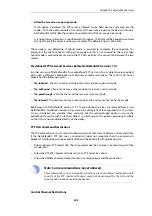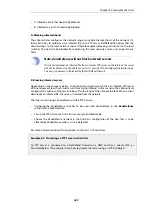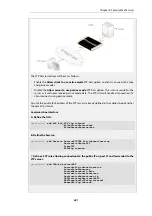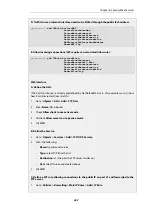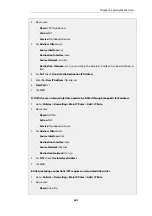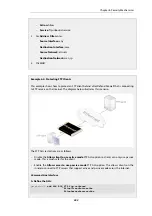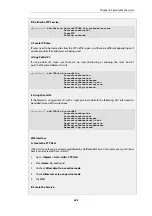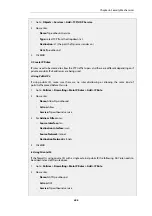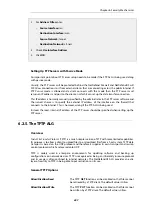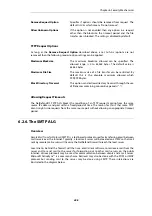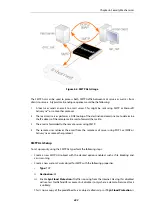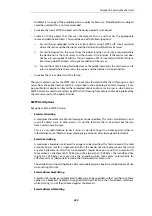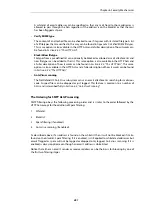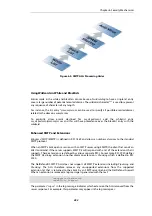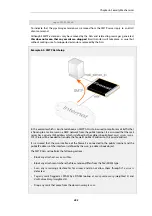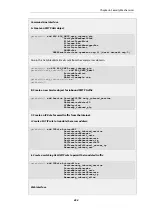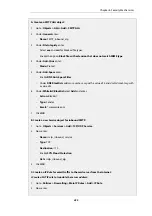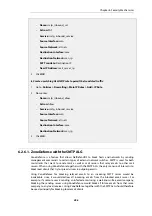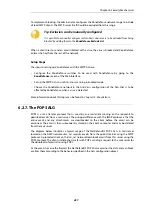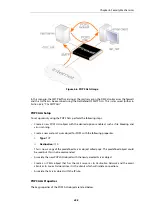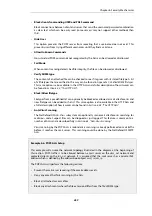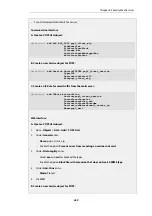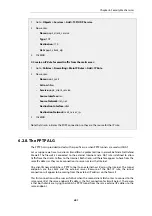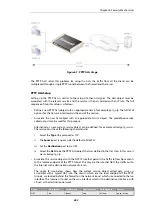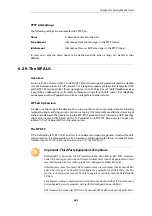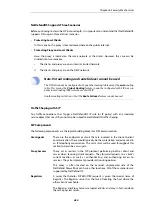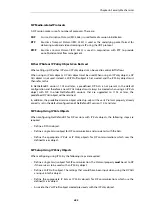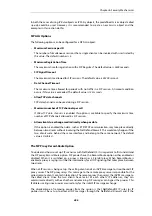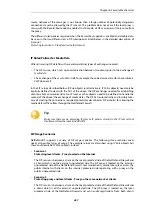
Figure 6.5. SMTP ALG Processing Order
Using Wildcards in White and Blacklists
Entries made in the white and blacklists can make use of
wildcarding
to have a single list entry
cover a large number of potential email addresses. The wildcard character "
*
" is used to represent
any sequence of characters of any length.
For instance, the list entry
*@example.com
can be used to specify all possible email addresses
related to the domain
example.com
.
To
explicitly
allow
emails
destined
for
my_department
,
add
the
whitelist
entry
my_department@example.com
and this will have precedence over the blacklist entry with the
wildcard.
Enhanced SMTP and Extensions
Enhanced SMTP
(ESMTP) is defined in RFC 1869 and allows a number
extensions
to the standard
SMTP protocol.
When an SMTP client opens a session with an SMTP server using ESMTP, the client first sends an
EHLO
command. If the server supports ESMTP it will respond with a list of the extensions that it
supports. These extensions are defined by various separate RFCs. For example, RFC 2920 defines
the SMTP
Pipelining
extension. Another common extension is
Chunking
which is defined in RFC
3030.
The NetDefendOS SMTP ALG does not support all ESMTP extensions including
Pipelining
and
Chunking
. The ALG therefore removes any unsupported extensions from the supported
extension list that is returned to the client by an SMTP server behind the NetDefend Firewall.
When an extension is removed, a log message is generated with the text:
unsupported_extension
capability_removed
The parameter "
capa=
" in the log message indicates which extension the ALG removed from the
server response. For example, this parameter may appear in the log message as:
Chapter 6: Security Mechanisms
452
Summary of Contents for NetDefendOS
Page 30: ...Figure 1 3 Packet Flow Schematic Part III Chapter 1 NetDefendOS Overview 30 ...
Page 32: ...Chapter 1 NetDefendOS Overview 32 ...
Page 144: ...Chapter 2 Management and Maintenance 144 ...
Page 284: ...Chapter 3 Fundamentals 284 ...
Page 392: ...Chapter 4 Routing 392 ...
Page 419: ... Host 2001 DB8 1 MAC 00 90 12 13 14 15 5 Click OK Chapter 5 DHCP Services 419 ...
Page 420: ...Chapter 5 DHCP Services 420 ...
Page 573: ...Chapter 6 Security Mechanisms 573 ...
Page 607: ...Chapter 7 Address Translation 607 ...
Page 666: ...Chapter 8 User Authentication 666 ...
Page 775: ...Chapter 9 VPN 775 ...
Page 819: ...Chapter 10 Traffic Management 819 ...
Page 842: ...Chapter 11 High Availability 842 ...
Page 866: ...Default Enabled Chapter 13 Advanced Settings 866 ...
Page 879: ...Chapter 13 Advanced Settings 879 ...

